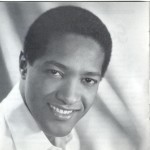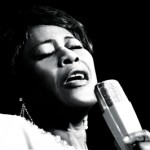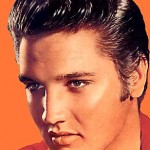The Greatest Voices Project: #20-#16
[To read an introduction to The Great Voices Project, click here.]
[To read previous portions, of the list, click the following links: #50-#46 … #45-#41 … #40-#36 … #35-#31 … #30-#26 … #25-#21.]
———————————-
He may not know much about history, but Sam Cooke absolutely knew how to sing. Considered one of the greatest soul voices of them all, Cooke was able to sing many types of music.
Cooke was one of the greatest hit-makers of all time, charting 29 songs in the top 40 in just seven years. Tragically, he was shot to death at the age of just 33. While he started as a gospel singer, Cooke quickly grew a reputation as one of the major forces in the foundation of soul music.
His voice was heard on such hits as “Twistin’ the Night Away,” “Chain Gang,” and “You Send Me.” The song that is my favorite for hearing his vocal quality, though, is “Another Saturday Night.” Enjoy this soul classic.
———————————-
Known as “the first lady of song,” Ella Fitzgerald’s incredible recording career spanned an amazing 59 years. Singing everything from jazz to pop to big band music, Fitzgerald had a range that, at times, seemed to be unending. In actuality, it was 3 octaves. While that is not the widest range in recording, Fitzgerald stands out because her voice was as strong in every part of her range.
Ella Fitzgerald has sung nearly every American classic from the first have of the 20th Century, and is considered one of the most important artists to sing many selections from The Great American Songbook, which includes works by Gershwin, Duke Ellington, and Cole Porter, among many others. Her jazz style made the songs her own, and brought them to new audiences.
Most people have heard Ella Fitzgerald at some point in their lives, whether they knew it or not. Her version of “A-Tisket, A-Tasket” is known around the world. To me, though, “How High the Moon” shows off Fitzgerald’s style as well as any other song. Enjoy Fitzgerald’s singing and scat singing in this classic.
—————————————
The standard for every bass singer since, J.D. Sumner at one time was in the Guinness Book of World Records for singing the lowest bass note of all time. However, it was more than just the low register that made Sumner a star, it was his ability sing with power and emotion, even in extremely low registers.
Being part of several Southern Gospel groups, Sumner made a name for himself. Most notably, he was the deep bass for the Stamps Quartet for some 40 years. However, what gave Sumner (and the Stamps Quartet) their widest audience was being on tour with Elvis Presley. Presley was amazed by Sumner’s voice, and asked the group to tour with him, which they did for the last 7 years of Presley’s life.
It would be nearly impossible to describe Sumner’s influence on Southern Gospel music. While he was not the original low bass, he is easily the most famous one, and his influence in undeniable. From sliding down to low notes, to holding hands over ears when singing extremely low notes, bass singers follow Sumner’s every move. But it was more than just his deep register that earned him a place on this list. It was the control over the deep notes, and the power with which they were sung.
“Anytime” was a Stamps Quartet song that featured JD singing as a solo. Enjoy Sumner’s amazing bass on this track.
————————————–
From a man who backed “The King of Rock and Roll,” to the man who wore the title. Elvis Presley has been remembered for a lot of things since his death in 1977, but what has far too often been forgotten was that Presley could sing.
One of the greatest showmen of all time, Presley got his start at Sun Records in Memphis at the tender age of just 13, when the record label wanted to have a white singer who could bring more up tempo songs from the African-American world to a broader audience. In many ways, Elvis spent the rest of his life bridging that gap in both directions. As his appeal grew, so did his ability to record and perform different styles of music. All told, Elvis did far more than just rock and roll. He sang and recorded Gospel, jazz, pop, country, rockabilly, western, show tunes, and other songs.
While controversy followed Presley, his voice continually drew in more fans. With all the cultural iconic images of his face, clothes, house, and cars live on, it is Elvis Presley’s voice that needs to be remembered more. With an astounding 31 number one hits in either the US or UK, Presley’s place in recording history is secure.
From “Jailhouse Rock” to “Suspicious Minds” to “Teddy Bear” to “Burning Love,” listeners for generations will listen to Presley’s hits and be moved by the music. However, a deeper listen will reveal the voice behind it all. Choosing one song from such a great collection is nearly impossible, but “American Trilogy” shows off Elvis’ range and passion. Here is his version of the song from 1973s TV special “Aloha from Hawaii.”
—————————————
Most well-known for loving ballads, Canadian Celine Dion has been amazing audiences with her soaring soprano voice for 20 years now. Since “Where Does My Heart Beat Now” reached #4 in the United States in 1990, Dion has reached the US top 10 on eight other occasions, and now headlines her own show in Las Vegas.
With a soprano voice that spans a reported five octaves, Dion is able to sing powerfully above the normal range of most other pop superstars. Most of her hit songs have been love ballads, although she claims that she likes singing more up-tempo songs live. She has sold over 175million albums around the world, and has the highest-selling French language album of all time, her 1995 release “D’eux.”
Due to most of her hits being of a similar style, choosing just one is nearly impossible. Instead, here is a live performance of Celine singing “O Holy Night.”








One Comment
Pingback: